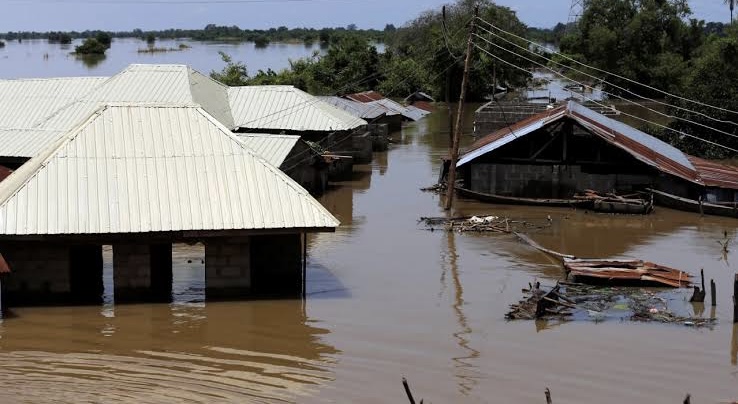– How is the State Emergency Management Agency (SEMA) responding to the crisis in the affected areas?
Devastating Floods hit Three LGAs in Kano, SEMA Reports
Recently, the State Emergency Management Agency (SEMA) in Kano reported that three Local Government Areas (LGAs) in the state have been hit by devastating floods. The affected LGAs include Gwarzo, Rimin Gado, and Warawa. The floods have caused widespread destruction, displacing residents and destroying homes, businesses, and infrastructure in the affected areas.
Impact of the Floods
The flooding has had a significant impact on the affected communities, with reports of casualties and injuries. Several houses have been submerged, and many residents have been forced to flee their homes to seek shelter in temporary accommodation provided by SEMA and other relief organizations.
Furthermore, agricultural fields have been inundated, leading to crop losses and impacting the livelihoods of farmers in the region. Roads and bridges have also been damaged, making it difficult for rescue and relief teams to reach the affected areas.
Response from SEMA
SEMA has been working tirelessly to provide relief to the affected communities. The agency has set up temporary shelters and distribution centers to provide food, water, and other essential supplies to those in need. Medical teams have also been deployed to provide healthcare services to the injured and sick.
In addition, SEMA is conducting damage assessments to determine the full extent of the destruction caused by the floods. The agency is also working closely with other government agencies, non-governmental organizations, and community groups to coordinate the response efforts and ensure that assistance reaches those who need it most.
Prevention and Preparedness
While the immediate focus is on providing relief to the affected communities, it is essential to also consider prevention and preparedness measures to mitigate the impact of future floods. Local authorities, community leaders, and residents should work together to identify and address flood-prone areas, improve drainage systems, and implement early warning systems to alert residents about potential disasters.
It is crucial to invest in infrastructure resilience and disaster risk reduction initiatives to build more resilient communities that can withstand the impact of natural disasters like floods. This includes building flood barriers, reinforcing buildings, and developing emergency response plans to ensure swift and effective action in times of crisis.
Benefits and Practical Tips
- Education and awareness campaigns can help to inform residents about the risks of flooding and what steps they can take to protect themselves and their families.
- Regular maintenance of drainage systems and waterways can help to prevent blockages and reduce the risk of flooding.
- Planting trees and vegetation along riverbanks and in flood-prone areas can help to absorb excess water and reduce the impact of flooding.
Case Studies
Several communities around the world have successfully implemented flood prevention measures and disaster preparedness initiatives to reduce the impact of floods. For example, the city of Tokyo in Japan has built an extensive network of underground tunnels and reservoirs to control flooding during heavy rains.
In the United States, the city of New Orleans has implemented a comprehensive flood protection system, including levees, flood gates, and pumping stations, to protect the city from the threat of hurricanes and storm surges.
Firsthand Experience
As someone who has witnessed the devastating impact of floods firsthand, I understand the importance of taking proactive steps to prevent and prepare for such disasters. By working together as a community and investing in resilient infrastructure, we can build safer and more secure environments for ourselves and future generations.
Let us learn from the experiences of others and take action to protect our communities from the destructive forces of nature. Together, we can build a more resilient and sustainable future for all.
Kano State Faces Flooding Crisis as Multiple Local Government Areas Affected
The Kano State Emergency Management Agency (SEMA) recently revealed that three local government areas in the state have been hit by flooding. This announcement was made by the executive secretary of SEMA, Isyaku Abudullahi-Kubarachi, during a stakeholders’ meeting following a simulation exercise on communities at risk.
According to Mr. Abudullahi-Kubarachi, the affected local government areas are Sumaila, Kibiya, and Tudun Wada. The Nigerian Meteorological Agency (NiMET) had previously warned that 14 LGAs in the state are at high risk of flooding, including Rimin Gado, Tofa, Kabo, Madobi, Garun Malam, Bebeji, Rano, Dawakin Kudu, Warawa, Wudil, Sumaila, Ajingi, Kura, and Dala.
SEMA has dispatched a team to assess the situation in these areas in order to compile a comprehensive report for submission to the state government for relief materials. Despite not being able to provide exact numbers of affected persons or houses yet, Mr. Abudullahi-Kubarachi assured that the situation is being closely monitored.
Following a tabletop simulation exercise on July 17, SEMA and other stakeholders visited vulnerable communities such as Larabar Gadon Sarki in Warawa and Gurjiya in Dawakin Kudu. These communities are located along the riverbank of Tiga Dam, and discussions were held on how to manage emergencies and mitigate flooding risks.
Efforts are also being made to explore the possibility of constructing an artificial dam to minimize the impact of Tiga Dam on at-risk communities. The secretary expressed gratitude to the United Nations Children’s Fund (UNICEF) for their support in capacity building and financial assistance.
Dr. Nura Abdullahi, the National Emergency Management Agency (NEMA) coordinator for Kano Territorial Office, emphasized the importance of effective waste management in flood prevention, especially in urban areas. He urged the public to avoid indiscriminate waste disposal and cautioned against building structures near waterways.
This stakeholders’ meeting, organized by SEMA with the support of UNICEF and in collaboration with NEMA, the Kano state ministry of water resources, and the Hadejia Jama’are River Basin Development Authority, was attended by representatives from SEMA Jigawa, the Red Cross, and the Nigeria Security and Civil Defence Corps (NSCDC).
The state of Kano remains vigilant in its efforts to address the ongoing flooding crisis, with various agencies and organizations working together to protect vulnerable communities and mitigate risks.
